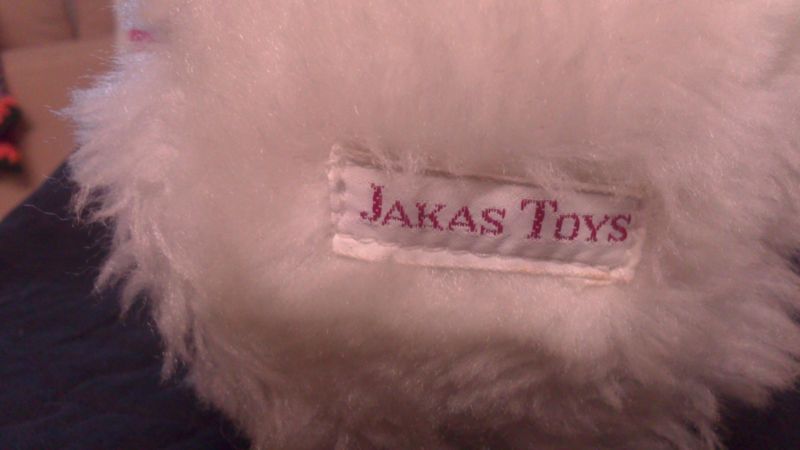
How Old Is My Jakas Teddy Bear?
The Jakas company began producing teddy bears in the late 1950s, in Melbourne.
1950s-The earliest teddies were distinctively different to those made from the 1960s on-wards. Fully jointed, and with brown glass eyes, they were made from a wool/synthetic fabric, with woven fabric for the pads (possibly being reversed pieces of the body material). The label was machine-stitched on beige fabric, reading JAKAS TOYS/ WASH IN LUX.
Teddies produced from the 1960s to the 1980s have a distinctive look, and can more easily be recognised and dated, according to their labels, fabrics and look.
1962-One of the most recognised teddies in Australia would be Big Ted from the longest running childrens television show, Play School. Big Ted was produced by Jakas and has the outstretched arms and face that were to become synonymous with Jakas. He has plastic lock-in eyes, pioneered by Wendy Boston, which met the newly-introduced government regulations for child safety. His label, as do the other teddies made at this time, would read JAKAS TOYS/WASH IN LUKEWARM LUX, embroidered in red on a white background. Foam-filled, he is able to be fully submerged, which allows him to be hygienically washed. The teddy shown in the featured picture is also a 1960s teddy.
These unjointed teddies were produced in a range of sizes, from 15 cm, which included a satin hanging ribbbon, for attaching to a cot or bassinette. The majority were made in shades of beige, yellow or orange, though blue, pink, and other colours were also manufactured.
1970s-This teddy was made in the late 1970s. His face is very similar to those of the 1960s, with the small, black vertically-stitched nose and small, straight mouth. This sheild-shaped nose and mouth are distinctive to the company. The fabric has a shorter pile, but is also a synthetic plush. As can be seen, his head is round, with a flat muzzle. He was made, as most Jakas teddies of this time were, in the seated position, with arms outstretched. He doesnt have any pads. and is 32cm tall. His label reads JAKAS TOYS, sewn onto the inside of his right leg, embroidered in red on white cotton.
1980s-The fabric used at this time, and for this teddy, had a longer pile, and so teddies produced during the 1980s appear more fluffy than earlier versions. This example also has a smile, whereas most others retained the horizontal mouth. His tags reads JAKAS TOYS, printed in red ink on a white background.
1989–Jakas also produced a limited edition range of high quality synthetic toys and teddies, to compete with the influx of cheaper Asian imports, by offering quality for discerning buyers. This included a pussy cat with a lovely smiling face, and of wonderful quality. Her eyes are high-quality plastic, and she has embroidered features. The pink plush used for her body is woven-backed, and very thick. Pads are of pink cotton. Her tag reads JAKAS SOFT TOYS/MELBOURNE-AUSTRALIA, with the Made in Australia symbol on the right hand side, and is printed in green ink on white.
1990-A limited edition of mohair teddies was also produced in this year. These teddies are quite hard to find.








